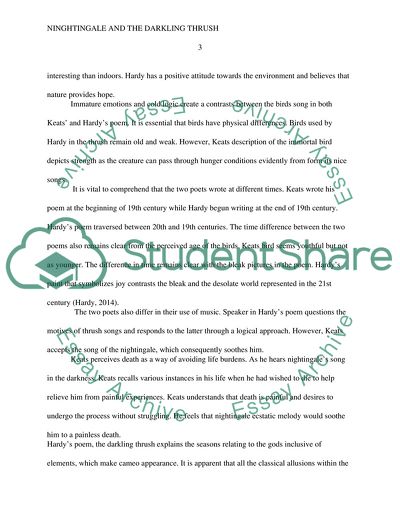Ode to a Nightingale by John Keats and The Darkling Thrush by Thomas Coursework Example | Topics and Well Written Essays - 1500 words. https://studentshare.org/literature/1842078-ode-to-a-nightingale-john-keats-and-the-darkling-thrush-thomas-hardy
Ode to a Nightingale by John Keats and The Darkling Thrush by Thomas Coursework Example | Topics and Well Written Essays - 1500 Words. https://studentshare.org/literature/1842078-ode-to-a-nightingale-john-keats-and-the-darkling-thrush-thomas-hardy.


